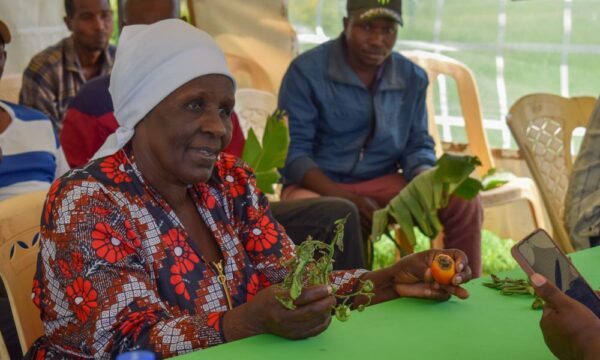David J. Spielman joined the International Food Policy Research Institute (IFPRI) in 2004, and is currently a senior research fellow based in Washington, DC. His research agenda covers a range of topics including agricultural science, technology and innovation policy; seed systems and input markets; and community-driven rural development. His work maintains a regional emphasis on East Africa and South Asia.
This post is re-blogged from the IFPRI blog.
Imagine agriculture in India as a high-tech, highly mechanized venture. Picture a rice farmer taking soil samples with a handheld meter to gauge nutrient and moisture needs, calibrating planting along plot contours with GPS-guided tools, placing rice in precise rows using a mechanical transplanter, and doing this with the backing of reliable, customized financing. Now picture this farmer as a woman—because most of the men in her village have migrated to the cities in search of better opportunities.
It sounds far-fetched, doesn’t it? It certainly doesn’t correspond with our image of poor rice farmers toiling in knee-deep water under the hot sun and monsoon rains, prey to the local moneylender.
But this future is nearer than we realize, and it was the focus of a roundtable on “Sustainable Intensification in South Asia’s Cereal Systems: Investment Strategies for Productivity Growth, Resource Conservation, and Climate Risk Management” held on May 19 in New Delhi.
The roundtable brought together 20 of India’s leading firms and entrepreneurs in the agriculture sector: ITC, John Deere, Mahyco, and Claro Energy Systems, to name but a few. Their objective was to explore solutions—innovative products, services, and business models—for India’s risk-prone ecologies. These are the ecologies concentrated in India’s underserved but emerging agricultural markets in Bihar, eastern Uttar Pradesh, and Odisha. In these places, farmers were passed over by the Green Revolution and still struggle with acute weather and price risk.
These 20 firms and entrepreneurs came to build collaborative action plans and joint investment strategies, both on a bilateral basis and under the auspices of the Cereal Systems Initiative for South Asia (CSISA), a partnership that aims to accelerate the development and inclusive deployment of new varieties, sustainable management technologies, and improved agricultural policies in these risk-prone smallholder farming communities that are the backbone of Indian agriculture.
The event was driven by a need to identify new product tie-ins, joint ventures, technical collaborations, and shared marketing channels. Leading firms in the crop sciences—such as BASF and Pioneer traded innovative ideas with startups in information technology (Cropin Technologies and BKC Weathersys), social entrepreneurs (Kaushalya Foundation and Digital Green), and financial service firms (Ratnakar Bank,Micro Insurance Academy, and Yes Bank). Even the Ministry of Science and Technology NECTAR threw its hat into the ring with a discussion of several low-cost technology options they were exploring with the private sector.
Participants explored a range of innovative products, services and business models that could improve smallholders’ yields and the sustainability of their farming practices—from solar pumps to digitally enabled crop advisory services and microinsurance services to real-time weather data with forecasting algorithms for pest and disease outbreaks and “one-stop shop” computer-assisted rural learning centers.
Now everyone knows—and many readers might grumble—that companies are driven by profitability goals rather than the needs of smallholder farmers.
True enough. But these companies are betting on the idea that there are innovative and profitable solutions worth pursuing in emerging rural markets. Their challenge was to assemble better analytics on the impact of technological change across multiple dimensions in these markets: productive efficiency, farm profitability, social and economic equity, and gender.
This makes evidence one of the critical goals going forward. Each new product, service, or business model on the market gives us an opportunity to experiment, evaluate and improve. Already, we have gathered some good evidence on several products that showed up in the discussion—laser levelers for precision land preparation, for example. But there are lots of other innovations in the pipeline for rural India that demand further study. With further analysis of their performance—away from the laboratory and research station, and under real-world conditions—we can offer more evidence to investors, entrepreneurs, and farmers on what works and for whom.
View original article: http://www.ifpri.org/blog/roundtable-brings-high-tech-farming-ideas-india-s-risk-prone-ecologies
1 Comment
Leave a Reply
Related News & Blogs
The ‘plant’ doctor will see you now
This blog was originally published on Good Food Movement Until five years ago, M. Muthulakshmi, a farmer from Thoppupatti village in Dindigul district, Tamil Nadu, relied heavily on chemicals, including banned antibiotics like streptomycin, for her pad…
4 February 2025






Hi, Nice blog for small farmers innovations that will give advantage in India’s risk-prone ecologies.